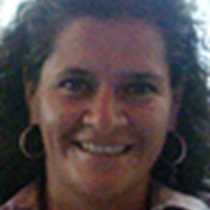Floreana Island
Also known as Charles or Santa Maria, Floreana Island takes us back to the human history of the archipelago – this was the first inhabited islands of the group. After an early morning wake up call, we headed to the beach historically known as Post Office Bay. The Post barrel here is one of the oldest mailing systems of the western Pacific Ocean. It dates back to 1973 and is still used today. Due to the presence of giant tortoises and fresh water, early visitors, mostly whalers and buccaneers, used the barrel to either leave or collect mail to take back home. The name Floreana was given to the island by President Flores as his government took possession of the archipelago back in the eighteen hundreds and claimed it as part of the Ecuadorian territory.
One of Charles Islands’ most memorable visitors is Charles Darwin. It was here that he noted he’d heard the vice Governor comment that, “he could tell where the tortoises came from just by looking at their shell”…
Champion, the second stop of the day is home for the Floreana Mockingbird that can be seeing hoping around the vegetation. They are unable to reproduce in Floreana, due to the presence of feral cats and the black or introduced rat, the remaining population of “cucuves” that inhabits these two satellite formations is not greater than 120 individuals. The National Park Service is starting a captive breeding program to help the numbers increase as part of a project to restore the island’s ecosystem.
As we jumped into the crystal clear waters, we were greeted by a school of King angels, Sargent majors, Creole fish and more… sea lions came to greet us and as usual they completely stole the show. We had been carried away by them, not only by playing with them, but it was very strange to realize that at some point we just became part of their world…
An afternoon walk took us to Punta Cormorant, named after a ship that wrecked on the bay back in the old days. An interesting trail, we were surprised by the brackish water lagoon just off the beach. This type of ecosystem is the perfect home for the Greater Flamingo, a Galápagos sub-specie, with no more than 500 individuals. We finally understand that in general, island populations are not big. Due to size limitations, this isolated archipelago can only take up to a certain number of species and individuals. Back at the beach the scenery and the colors of the ocean together with the white sandy beach made us want to stay here forever. As we drew closer to the water we were wonderfully surprised by the number of sting rays that had come to feed of sand crabs.
As we walked back to the ship we couldn’t be any happier, what a marvelous day here in paradise!




